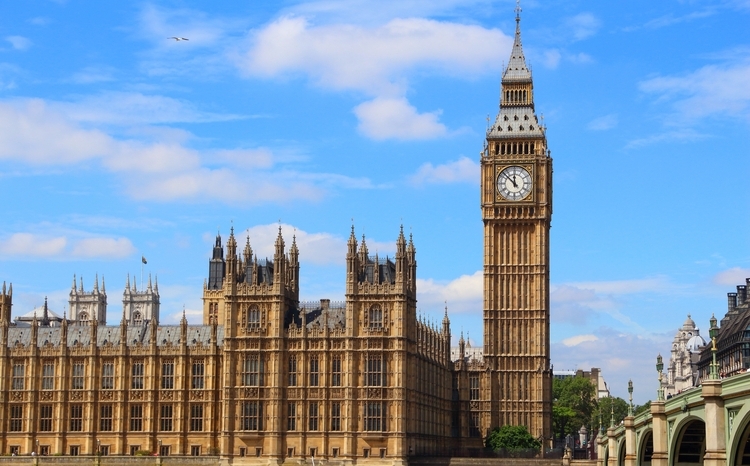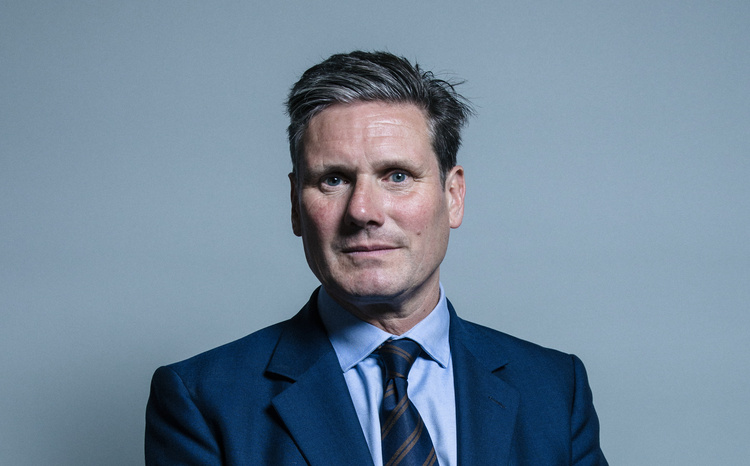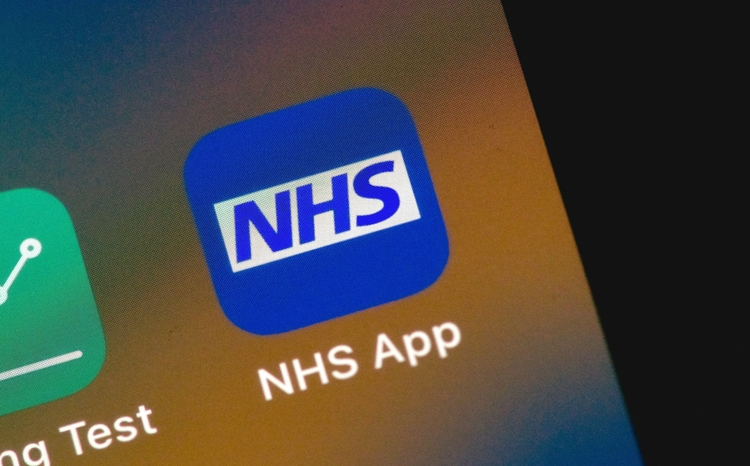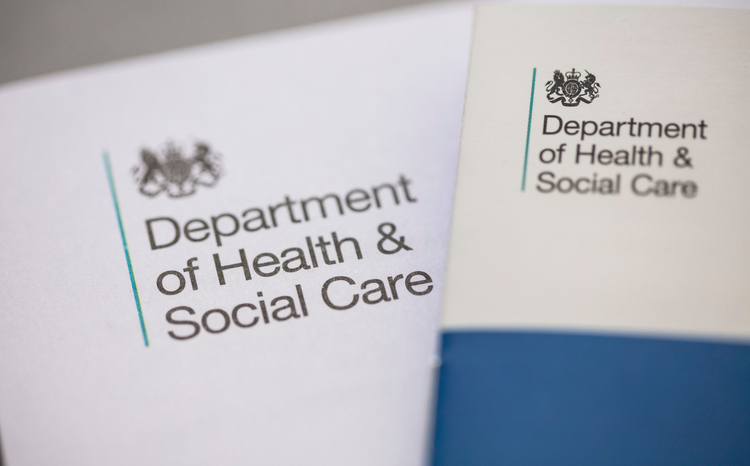Digital health sector reacts to Autumn Budget NHS investment
- 31 October 2024

- Leaders from across the digital health, care and technology sectors have reacted to chancellor Rachel Reeves' Autumn Budget
- The budget included an additional £22.6bn for Department of Health and Social Care day-to-day spending and more than £2bn investment in NHS technology and digital
- Additional funding has been welcomed but many have called for more clarity on how the money will be used to improve efficiency, productivity and patient care
Leaders from across the digital health, care and technology sectors have reacted to chancellor Rachel Reeves’ Autumn Budget.
The budget announcement on 30 October 2024 included an additional £22.6bn for Department of Health and Social Care day-to-day spending over two years, more than £2bn capital investment in NHS technology and digital, and £520m for a Life Sciences Innovative Manufacturing Fund.
In a pre-budget announcement Reeves also pledged £1.5bn in capital investment for new surgical hubs, diagnostic scanners and beds across the NHS estate.
Digital health leaders have welcomed the additional funding but many have called for more clarity on how the money will be used to improve efficiency, productivity and patient care. Here’s what they had to say:
Tom Whicher, chief executive and founder of DrDoctor
“Let’s turn this ship around! While a single budget will not fix the NHS overnight, the strength of commitment shown by Rachel Reeves today is a refreshing example of promises being kept.
“As pressure on our health service increases, finding the funds to keep up with demand is a complex and difficult task.
“But with tax rises making it possible for the government to earmark £3.1 billion for capital investment in the NHS and an increase of £22.6 billion for day-to-day spending on healthcare, a lot of good will be done.
“Investing in the infrastructure to make two million extra appointments available is a great way to reduce the waitlist but, with stretched bank balances front of mind, there is a more efficient way.
“Our insights from patients who have missed hospital appointments shows that nearly a third would find it easier to attend their appointment if they could rearrange it online or move it to a more convenient time – that’s a really quick fix to shrinking the waitlist by reducing Did Not Attends (DNAs).
“I welcome the approach to the NHS in this budget – it’s bold but realistic. But I’d also like to see more evidence of us working smarter, not just harder, to deliver a modern NHS that does justice to patients and the dedicated professionals working within it.”
Steve Wightman, general manager – Healthcare, Access HSC
“The NHS has received a significant financial boost that has the potential to make inroads in tackling critical frontline issues such as the backlog.
“However, with other vital services such as social care receiving a significantly smaller cash injection in comparison, integrated care boards (ICBs) will be more critical than ever to empower providers to deliver whole-person care that’s more community-based.
“And given Streeting’s focus on shifting from analogue to digital, integrated care system (ICS) leaders will benefit from investing in digital ecosystems (rather than individual provider-level solutions) that can deliver economies of scale and greater value at lower costs. In doing so, they can drive out the duplication of efforts and investments across individual care settings.
“Now is the time for health leaders to leverage proven, interoperable and scalable solutions, and address the inefficiencies that have come about from siloed commissioning.”
Dr Mark Ratnarajah, UK managing director for C2-Ai
“The budget won’t fix the NHS alone, say ministers. So, what will? It’s not just about 40,000 more weekly appointments, what’s really needed is reformed ways of working, according to Wes Streeting. He’s right.
“Fuelled by new insights from technology, some of the most impactful novel ways of working already exist in the NHS today, but they remain sub-scale.
“Today’s promise of additional money isn’t a golden ticket but this budget could be an important date that brings with it opportunities: to properly examine what needs to be done nationally and locally, and to be brave enough to stop activities that add little value to allow for innovative practices that increase productivity and patient benefit.
“We need more than a focus on innovation and the latest pilot, to scaling what the NHS knows works, so that we can fix problems right now, rather than waiting the course of one or more parliaments to make this happen.”
Mark Leftwich, managing director, Philips UK & Ireland
“The chancellor’s decision to increase capital investment in technology to deliver more NHS operations, scans and appointments shows early promise.
“Patients are stuck on waitlists, staff are facing burnout, and three quarters of NHS teams have faced a lack of investment in medical equipment and technological solutions. This funding is a chance to start pulling the NHS back on track.
“State-of-the-art technology is changing the way that care is delivered in pockets, but increased investment in digital and innovation is needed to accelerate this at scale.
“Primarily, we want to see this increase in capital investment come to life across facilities, infrastructure and innovation.
“Focus should be on digitising NHS services, bringing the single patient records to life, and shifting care from hospitals to home.”
Nick Lansman, chief executive and founder of the Health Tech Alliance
“The Health Tech Alliance welcomes the budget announcement of increased spending in health services, including an additional £22.6 billion for the Department of Health and a £3.1 billion increase in capital investment.
“The new 2% productivity growth target for the NHS will be supported by critical funding for surgical hubs and diagnostics, which will be key for Labour’s plans to deliver 40,000 appointments per week.
“We also welcome the increased focus on using technology to improve public services and investment in research and development, including the Life Sciences Innovation Manufacturing Fund which will help to address the uptake of innovation in the NHS.
“With hospital backlogs at nearly 8 million and the 10 year plan for the NHS early in development, this funding is certainly a step in the right direction for improving patient outcomes and getting the NHS back on its feet.”
Jane Rendall, UK and Ireland managing director for Sectra
“The budget’s focus on NHS diagnostic technology is extremely important.
“The government has rightly singled out an investment priority to level up NHS scanning capability and capacity.
“In practice, this resource deployment must happen closer to the people who need it the most.
“Providing diagnostic capability in places convenient to patients: in their communities, by their communities, and in ways that the hardest to reach citizens’ trust, will help more people engage with diagnostics and screening.
“More scanning capacity is only part of the answer. We need to leverage every piece of technology out there, for everyone, not just a chosen few.
“This doesn’t only mean multi-million pound modalities, but simple wearables in the home that feed the diagnostic picture.
“And we need flexible, ongoing investment to harness emerging technologies – such as AI that not only supports a diagnosis today, but that can predict 20 years into the future for a patient.”
Julian Coe, Managing Director, X-on Health
“A budget increase is welcomed but with today’s announcement we need to ensure that the NHS is moving forward, not simply standing still.
“To move forward, other elements must be given serious consideration alongside the finances.
“At a primary care level, enabling patients to get an appropriate appointment does not need major investment, in reality it requires effective practical support for each and every GP practice manager to optimise the use of tools already available.
“The only way to eliminate the 8am rush is to improve how all of the 6,400 surgeries in England operate – there is no national solution or magic wand.
“It needs specific work at every practice with two key elements: Reduce technology complexity to provide practice managers with a smaller range of better integrated tools, and provide practical support that enables the continual improvement of workflows. It needs detailed work in the weeds.
“NHS programme managers must discern those areas where more effective use can be made of existing funding in order to be able to direct sufficient investment to areas that need it most.”
Nadia Kadhim, chief executive, naq
“Today’s budget includes both opportunities and challenges for UK’s digital health companies. The increased funding for the NHS and a call for 2% efficiency gains to be made across all departments presents a big opportunity that technology can fulfil.
“The £520m for a new Life Sciences Innovative Manufacturing fund will also present significant opportunities for medical device manufacturers.
“However, the confirmation that employers’ National Insurance contributions will rise from 13.8% to 15% will hit innovators; prompting the sector to delay hiring, and in turn slowing time to market for new life-changing technologies.”
Darren Ransley, Managing Director UK & Ireland at Better
“We fully support the NHS funding committed by the chancellor to ease the burden on services.
“We’re pleased to see the use of technology featuring as an essential enabler to support the NHS’s return to a more stable footing and transform into a predominantly digital service.
“As the population grows and people live longer it will require a robust scalable model to propel healthcare safely into the future.
“OneLondon’s Universal Care Plan is using this innovative architecture to great effect, along with the most advanced healthcare systems across Europe.”
Alison Gardiner, founder and chief executive at Sleepstation
“The funding commitments for the NHS, including tackling the backlog and delivering extra appointments, are much-needed and should be welcomed.
“However, the untapped ways to release capacity using digital shouldn’t be overlooked at the expense of these new pledges.
“There are long waiting lists for cognitive behavioural therapy (CBT), for example. Yet for some conditions such as insomnia which affects c4 million people, digital CBT programmes have provided instant access to specialists and some have proven to deliver higher efficacy rates than traditional, face-to-face clinic appointments and fully automated options.
“While investment in staff and equipment will always be needed, the shift from analogue to digital is critical and has to start with unlocking existing opportunities for improved productivity and clinical outcomes by looking to exemplars who have already digitised care pathways at scale.”
Chris Davies, chief executive, The Institute of Clinical Science and Technology
“We welcome the increased investment for the NHS to help tackle the waiting list backlog and to generate another 40,000 hospital appointments per week.
“If the government is to lift the NHS out of crisis, we need to ensure every penny goes as far as possible by focusing on value-based healthcare and long-term sustainable solutions.
“Key approaches should be shifting further towards a digitally enabled NHS, getting care closer to the patient and primarily focusing on preventative care.
“With 50-60% of adults managing a chronic disease and £7 in every £10 in total health and social care expenditure spent on chronic conditions, it’s a fundamental target area.”
Mark Hitchman, managing director, Canon Medical Systems UK
“Confirmation in today’s Autumn Budget that £1.5bn will be invested in new beds across our country, along with more capacity for over a million additional diagnostic tests, surgical hubs and diagnostic centres, as part of the government’s 10-year plan to rebuild the NHS, is very welcome news indeed.
“However, to achieve an increased scanning capacity, this investment must address the replacement of outdated equipment.
“And without sufficient staff and space, even doubling the number of scanners will be ineffective.
“The increased funding for community diagnostic centres (CDCs) is fundamental. These centres provide accessible, local care, easing the load on hospitals by offering tests and diagnostics closer to patients.
“The workforce shortage, however, remains a pressing issue and bolstering this must be addressed.
“Radiography and other diagnostics face limited training opportunities, making roles highly competitive. Investing in advanced, AI-assisted technology can help improve efficiency, but the full benefits will only be realised with a strong, trained workforce.
“This budget represents a valuable step, but for the NHS to thrive, we need sustained investment in modern equipment, community-based care, and training expansions to meet healthcare demands and deliver better patient outcomes.”
Jon Pickering, chief executive, Mizaic
“We welcome the government’s commitment to invest in our NHS. Transformative funding is a promising step, and we’re watching closely to see how this will translate into practical support for digital initiatives within trusts.
“However, while these commitments are encouraging, we must remain cautiously optimistic – our sector has seen similar promises before, but a truly digital NHS requires sustained targeted investment and unwavering focus.
“The digital landscape across the NHS is still fragmented, and achieving a cohesive, paperless system means prioritising end-to-end digitisation of patient histories and enabling trusts to fully leverage centralised, accessible patient data.
“To make a real impact, funding needs to prioritise initiatives that enhance clinical workflows, improve patient care, and reduce waiting times.”
Dave Burrows, chief executive, Damibu
“It’s a significant win for the NHS and potentially digital too. However, with funding already allocated to certain areas, such as creating 40,000 more GP appointments and diagnostic hubs, tough decisions need to be made about priorities elsewhere.
“Lord Darzi’s report rightly pointed to tackling prevention and health inequalities.
“While there isn’t a silver bullet, there are examples of cost-effective tech solutions that help improve access to vital information and services for people from ethnic minorities and deprived communities.
“And it doesn’t require huge pots of money to scale. In fact, culturally responsive tools that improve engagement and outcomes can be relatively low-cost.
“The biggest challenge is the perverse commissioning models that disincentive one part of the health system to invest if the benefits are felt elsewhere – which is often the case with prevention.
“It’s a prime example where Wes Streeting’s mantra to invest in preventative care and digital will pay dividends for all in the long-term.”
Dr Rachael Grimaldi, chief executive, CardMedic
“The increase to the NHS budget is a positive step, though it falls short of adequately addressing the systemic issues plaguing our healthcare system, especially in areas like healthcare translation and communication.
“Freeing up appointments and reducing waiting lists is what we need but the proposed funding alone is unlikely to achieve such ambitious targets without a comprehensive strategy.
“Innovative technological solutions could provide more expedient fixes, especially when it comes to shifting from sickness to prevention, but truly leveraging their potential necessitates consistent funding and seamless integration into existing frameworks.
“The government’s intentions are a step in the right direction but translating these proposals into measurable progress on the ground will need substantive change. It will be interesting to see if the 10 year plan will be able to deliver this.”
Jody O’Neill, chief executive and cofounder, Curam
“While the chancellor’s allocation of £600 million to support local authorities with social care is welcome, it feels like a duct-tape solution to a much bigger, systemic problem. The cracks in the social care system run deep, yet the government continues to shy away from a desperately needed reform.
“Since Labour took office, there’s been a glaring lack of focus on the UK’s failing social care system. The system is crying out for an overhaul, but we’re yet to see real transformative action.
“Without meaningful measures that improve social care provision, talk of reforming the NHS remains empty words. We need to move on from patchwork solutions and invest in a healthier society.”
Richard Keyse chief executive and cofounder of Andi
“We welcome the Chancellor’s decision to provide a £1.3 billion real term funding increase to local government, with £600m set aside for social care.
“Local authorities must ring-fence part of this money for adult social care to meet the looming two-year deadline to switch telecare from analogue to digital.
“Investing in these new smart, preventative digital solutions will allow the elderly and vulnerable to stay in their own homes for longer, increasing their happiness and wellbeing as well as reducing costs to the taxpayer by millions.
“Without this technology, our care sector will be trapped using 1980s technology for at least another five years.”
Ángel Alberich-Bayarri, chief executive, Quibim
“The new government’s focus on modernising the NHS to cut waiting lists, and therefore save lives, is right on target.
“Cutting edge technologies, such as AI and data management tools, can enable more timely interventions and reduce the overall human and financial burden within the healthcare system.
“We hope that a significant portion of the £22.6 billion investment will consider how technology can help the NHS achieve these goals.
“It is critical for the private sector to be involved in this responsibly. Many entrepreneurs across Europe and the world are tirelessly working to address these issues, yet they face numerous barriers.
Medicine at its best transcends borders, and we hope the UK government will lower trade barriers to allow for critical innovation to be shared across countries.
“Thousands of entrepreneurs worldwide are eager to help reduce wait times and improve health outcomes, and with their help more money can be saved to help the UK return to more sustainable state finances.”
Rachel Murphy, founder of The Grafter, and Silver Buck advisory board member
“As someone who has the NHS running through her core and also a staunch supporter of entrepreneurs in this country, I’m somewhat conflicted by today’s budget.
“The NHS needs more resources to enable it to get back on a sustainable footing and the £22.6bn increase in the day-to-day budget will be very welcome when it arrives in the next financial year.
“However, I do feel for the smaller businesses, who are the lifeblood of innovation in health and care and already have tough jobs in maintaining their businesses, who will now have to foot the bill through increased national insurance contributions. It feels like we’re robbing Peter to pay Paul.
“I hope a significant proportion of the additional money allocated to health and care will be directed into areas that can make a long-term positive impact, such as investing in digital infrastructure, making the NHS App the digital front door to the NHS and giving people greater access to their health information.
“However, I fear as with previous capital injections, if this isn’t then supported with revenue budget increases, it will result in a short-term boost but a lack of long-term solutions.”
What do you think about the NHS funding promises in the Autumn budget? Let us know in the comments below.




